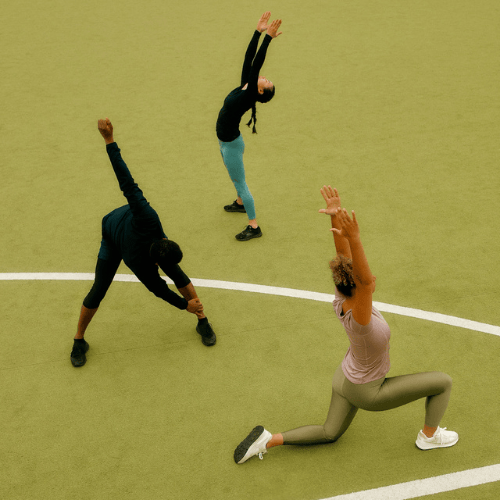SEO vs AEO vs GEO: The New Era of Search and AI Visibility
.jpg)
Short Description: Search is evolving fast. Learn how SEO, AEO, and GEO redefine organic visibility and how Human Digital helps brands stay trusted, cited, and visible in the age of AI.
Search is no longer just a list of links, it’s a conversation. And now, that conversation is powered by AI.
Answer engines, voice assistants, and generative platforms like ChatGPT, Gemini, and Perplexity are changing how people find and trust information. Being visible is no longer about ranking it’s about being referenced.
At Human Digital, we see SEO, AEO, and GEO as the three pillars reshaping the future of organic visibility and we draw on insights from HubSpot and Semrush to help brands adapt intelligently.
SEO: The Foundation Still Holding Strong
According to HubSpot’s 2025 State of Marketing Report, nearly 70% of marketers still rely on SEO as their most consistent long-term growth channel.
SEO is about ensuring your brand’s technical and creative fundamentals are sound:
- Fast-loading, crawlable sites
- Intent-driven keyword strategies
- Clean site architecture
- Authoritative backlinks
- Structured metadata
But traditional SEO has limits. Ranking #1 doesn’t guarantee being seen especially when users get their answers without clicking.
That’s where AEO and GEO now take the lead.
AEO: Competing in the Zero-Click Funnel
Answer Engine Optimisation (AEO) helps AI-powered systems like Google’s AI Overviews, GPT-4o, and Gemini understand, trust, and feature your content as a credible source.
As HubSpot’s AEO Grader puts it:
“Optimising for traditional search is no longer enough. AI systems now define how your brand is represented even before users reach your website.”
AEO is about owning that representation. When someone asks an AI assistant about your category, it’s your answers that shape perception not your landing page.
Practical AEO Actions
- Structure content for AI understanding.
Use question-based H2s, schema markup, and direct answers in plain language. - Publish factual, verifiable content.
Cite credible sources and industry data AI systems favour clarity and authority. - Monitor brand visibility in AI search.
Tools like HubSpot’s AEO Grader assess how AI platforms describe your brand, analysing tone, sentiment, and competitor share of voice. - Optimise for brand sentiment and narrative.
Ensure the themes AI engines associate with your brand align with your positioning not outdated or incomplete data.
AEO shifts the goal from traffic to trust. The question is no longer “How many people clicked?” but “How does AI describe us when people ask?”
GEO: Optimising for Generative Engines
Generative Engine Optimisation (GEO) takes this a step further. As outlined by Semrush, it’s the practice of optimising content to appear in AI-generated answers across tools like ChatGPT, Perplexity, and Gemini.
Generative engines don’t just rank pages they synthesise insights. Your visibility depends on how these systems reference your content.
GEO Best Practices
Semrush’s 2025 research highlights several emerging tactics for AI visibility:
- Include quotes, statistics, and cited data. Pages with factual depth are 30–40% more visible in AI-generated summaries.
- Earn brand mentions, linked or unlinked. AI models weigh brand recognition, not just backlinks.
- Use server-side rendering. Many AI crawlers still struggle with heavy JavaScript.
- Stay fresh. Update top pages quarterly; AI platforms reward recency.
- Be present on user-generated content (UGC) platforms. Reddit, YouTube, and Quora frequently feed AI training data.
In short:
If SEO is about being found, and AEO is about being chosen, GEO is about being trusted.
Why It Matters
We’re entering the search-to-synthesis era.
Clicks and rankings are lagging indicators. The real metric now is AI visibility how often your brand appears in machine-generated answers.
Brands that track and improve how AI engines describe them will own this next phase of organic influence.
Those that don’t will fade even if they “rank.”
HubSpot’s AEO Grader and Semrush’s AI SEO Toolkit are leading tools that quantify this new kind of visibility. Together, they measure:
- Share of voice in AI-generated responses
- Brand sentiment and tone
- Competitive positioning
- Narrative patterns across engines
These insights demonstrate how AI is influencing perception before prospects even visit your site.
Practical Guide: Writing for Humans, Search, and AI
- Start with audience questions.
Use HubSpot’s Topic Cluster model or Semrush’s Keyword Magic Tool to find how real people ask. - Prioritise clarity.
Write in short, direct sentences. Use a conversational structure that AI can parse. - Prove every claim.
Support points with statistics, case studies, or credible sources. - Structure for scanning.
Use bullet points, headings, and schema. AI and humans both prefer structured data. - Keep content fresh and factual.
Update regularly. AI engines reward relevance and penalise outdated or inconsistent data.
When you consistently publish credible, question-driven content, you don’t just optimise for search, you build digital authority.
How Human Digital Helps
At Human Digital, we help brands evolve from keyword-based marketing to conversation-driven visibility.
We integrate SEO, AEO, and GEO into one ecosystem to:
- Improve discoverability in both traditional and AI search.
- Strengthen authority through structured, verifiable storytelling.
- Align organic visibility with measurable business outcomes.
We turn data into clarity and clicks into conversations because being visible is no longer enough.
You need to be trusted, cited, and remembered.
In Short
- SEO builds your foundation.
- AEO earns your authority.
- GEO secures your future.
Tomorrow’s visibility won’t belong to the loudest; it will belong to those most useful and trusted by humans and AI.


.png)
.png)





